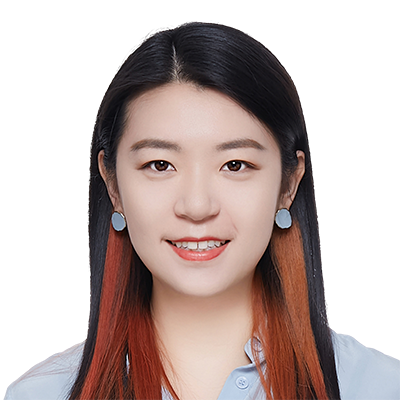-
 Jiadong Liu
Tencent Cloud
Interaction Designer
Jiadong Liu
Tencent Cloud
Interaction Designer
He is now a senior interaction designer of Tencent cloud design center. He has rich experience in enterprise platform level background system design. He is responsible for Tencent cloud console, customer service, basic products and other projects. He continues to build systematic design ability and process around product problems, so as to increase efficiency for product, design, research and development. At the same time, the core PMC participates in the company's collaborative project tDesign to build an enterprise level product design system. He graduated from East China University of science and technology with a master's degree in design in 2015.
At present, we focus on exploring the content strategy of complex background system, making the content close to users, and making it circulate efficiently through channel construction.
Promoting Experience of Complex Backend System with Design System and Special Track
With the rapid development of Tencent tob business, as the basic business support of the background management system, its experience quality directly affects the work efficiency of the whole team and becomes more and more important. But the background management system is complex, often due to internal and external factors. Internally, many product teams participate in the design and development of back-end system, and each product line is parallel and pays attention to its own business development, which will lead to some problems such as high difficulty in cross team project collaboration, large amount of simple work, repeated labor and labor consumption. Externally, users will have a lot of experience problems in the process of operating system, which need continuous iterative optimization. At the same time, the background system business threshold is high, users lack of professional knowledge, and it is difficult to understand the complex process, online and offline professional scene tasks, so they need to provide learning materials and appropriate service help for users.
A series of factors also bring challenges to the design. So how can designers improve the efficiency and reduce the cost of the business team and effectively drive the experience upgrade of complex background system in the face of a series of challenges such as business development, product experience and limited manpower? In this workshop, the keynote speaker will share the relevant strategies and methods of the backstage product design system and special design based on the relevant design experience of Tencent cloud backstage products, so as to help designers learn from similar situations and better play and enhance the influence and value of design in the business.
The workshop will share the following core content:
1. Design system and special projects
1.1 brief introduction of design system
1.1.1 definition of design system
1.1.2 three levels of design practice: design language, component library and design system
1.1.3 platform level and company level design system cases
1.1.4 Tencent cloud background system design system tea (brief introduction, content composition)
1.2 brief introduction of design project
1.2.1 design specific definition
1.2.2 special features: scene and platform
1.2.3 introduction of special cases such as help center, online customer service and work order
2. Design challenge
2.1 design project background introduction - Tencent cloud background management system
2.2 design challenges
2.2.1 facing business pressure: how to better meet the needs of large-scale production in the rapid development period of business
2.2.2 product user experience: independent and parallel product lines make collaboration difficult and experience quality difficult to control
2.2.3 design team value: many repetitive and simple designs consume time and affect professional precipitation and design value
3. Design practice: Taking Tencent cloud background system project as an example
3.1 design system: build a design system to improve business efficiency and optimize the basic experience of products
3.1.1 build Tencent cloud background system design system from 0 to 1
a. Design specification: including design language derivation, specification carding process, content writing template, UI kit, etc., multi roles participate in collaboration to complete component specification carding
b. Front end components: multi driver, process construction, health score and design self-examination, etc., implement design specifications, and apply to business
c. Design system: standardized construction, product demo, efficient tools and asset operation to improve the usability of design assets
3.1.2 design asset architecture (including user objectives, values, design mode, asset operation, etc.)
3.2 special design - systematically reduce customer service cost and improve product experience through "service model"
3.2.1 design analysis and objective derivation: analyze users, products, etc. to understand problems, and define design objectives in combination with business objectives, user objectives and motivations
3.2.2 service model: "user channel content" service model, to build an effective channel and improve the effective access of content
3.2.3 deconstruction thinking: effective content, product capabilities, etc. are deconstructed and recombined according to the new logic, so as to facilitate the flexible, convenient and accurate use of products
3.2.4 standardization construction: scene scheme standardization, process standardization, etc., to provide efficient service access
4. Design collaboration
4.1 jump out of the current business, participate in more extensive team collaboration, better apply the deposited assets and experience, and expand the value
1、Self introduction and course content overview
2、Basic concepts of middle and back office products: definition, features, classification and design challenges, etc
3、Design method discussion: in view of the project challenge, through the effective design strategy to solve the problem
4、Analysis of past cases
5、Interactive exercise: through the preset projects in the process, we can take part in the practice together
6、Extension design collaboration: continuously improving design value and influence
7、Summary and Q & A
1、To B designers
2、Product manager, product operations
3、Enterprise level background system practitioners
4、People who are interested in backstage product design system and special design related strategies
1、Learn how to build an adaptive service design system and effectively drive service use
2、To help participants understand how to design special projects to make daily small needs or scattered experience points more situational and systematic, so as to enhance value and team influence
3、Harvest the thinking method and service model summarized in the project, which can be used for reference and help for self generating project
-
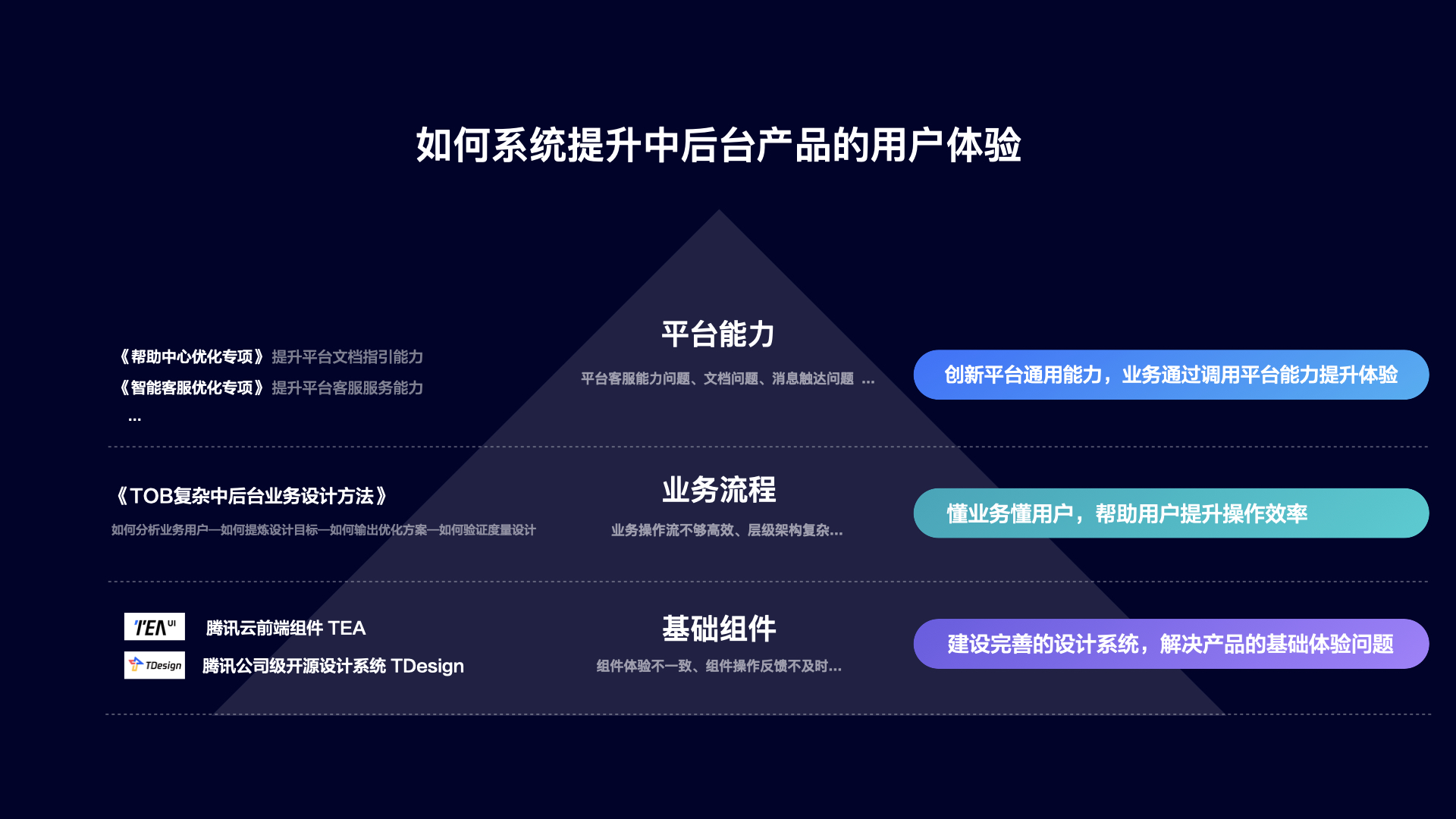 Systematically improve the background system experience
Systematically improve the background system experience
-
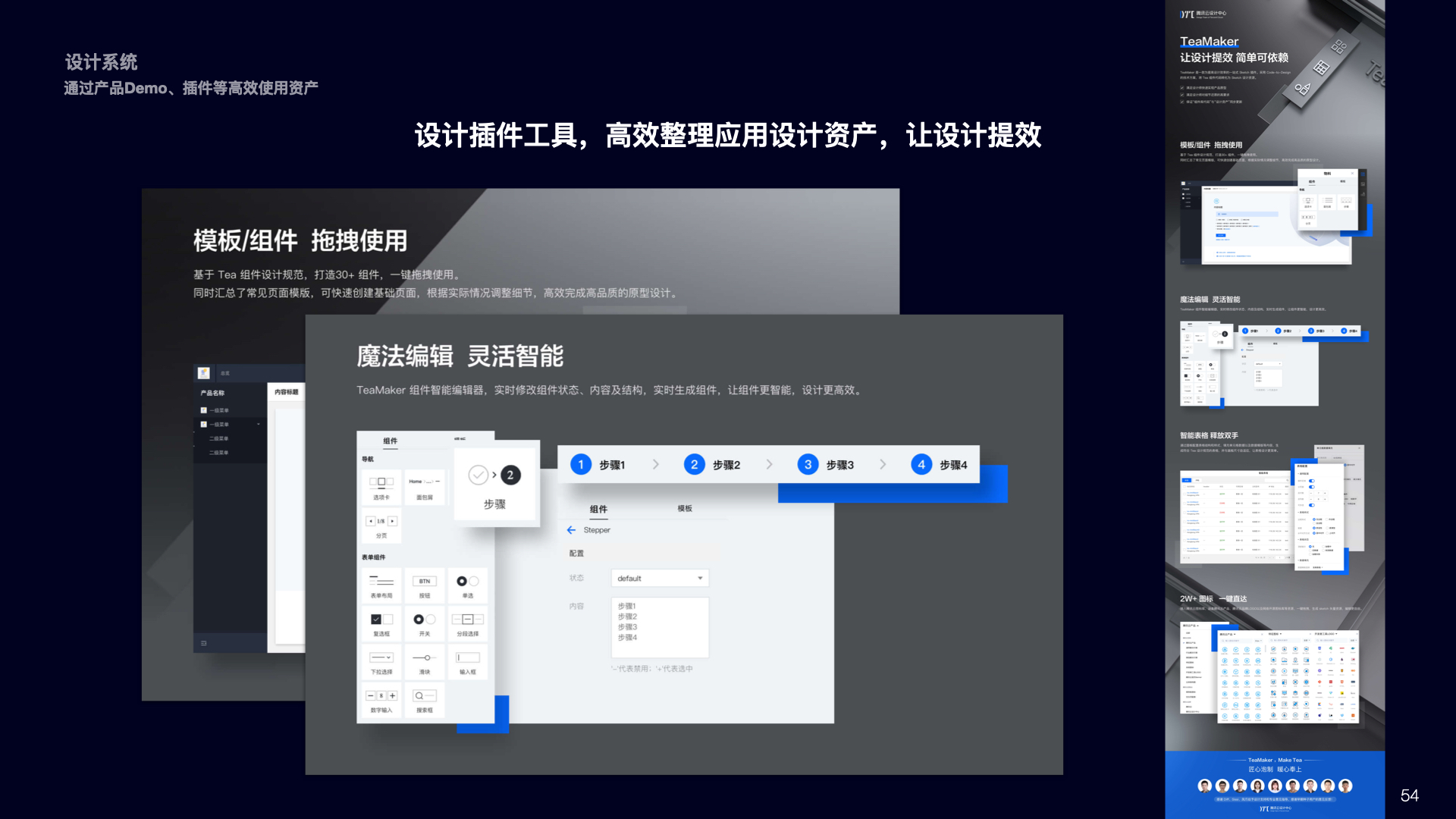 Design efficient asset management tools
Design efficient asset management tools
-
 Design architecture diagram
Design architecture diagram
-
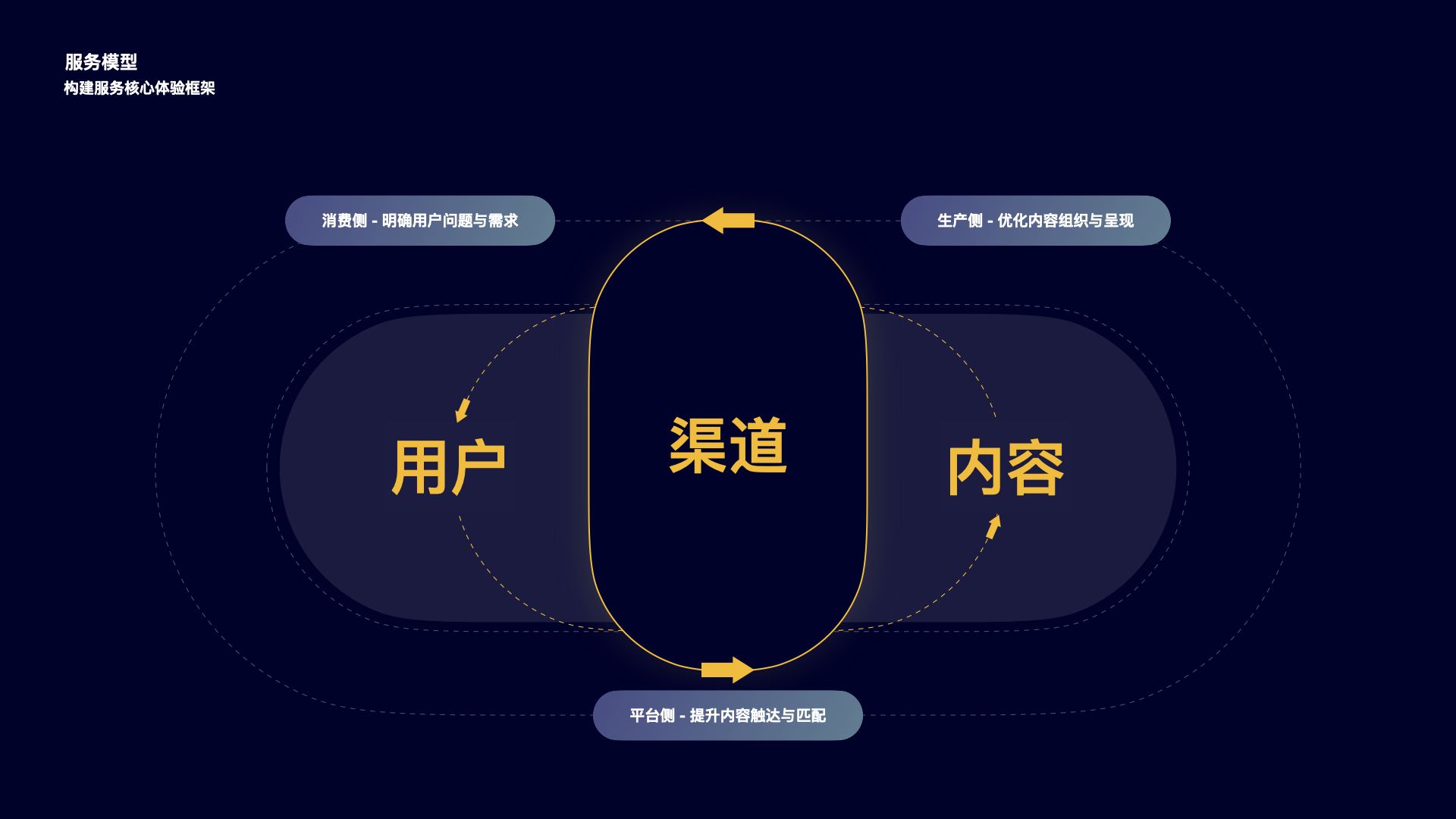 Service model: user-channel-content
Service model: user-channel-content
-
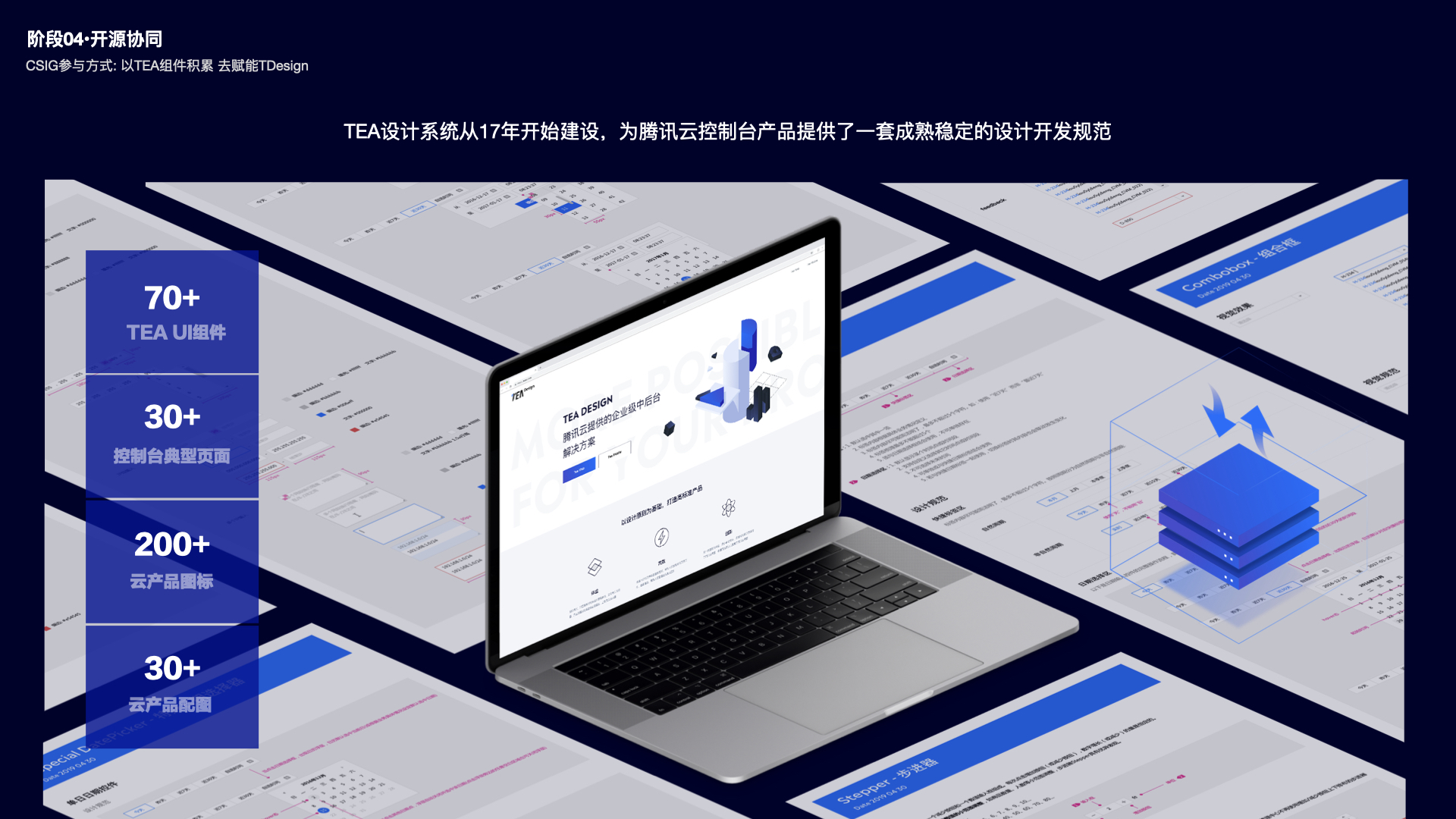 Design collaboration
Design collaboration
-
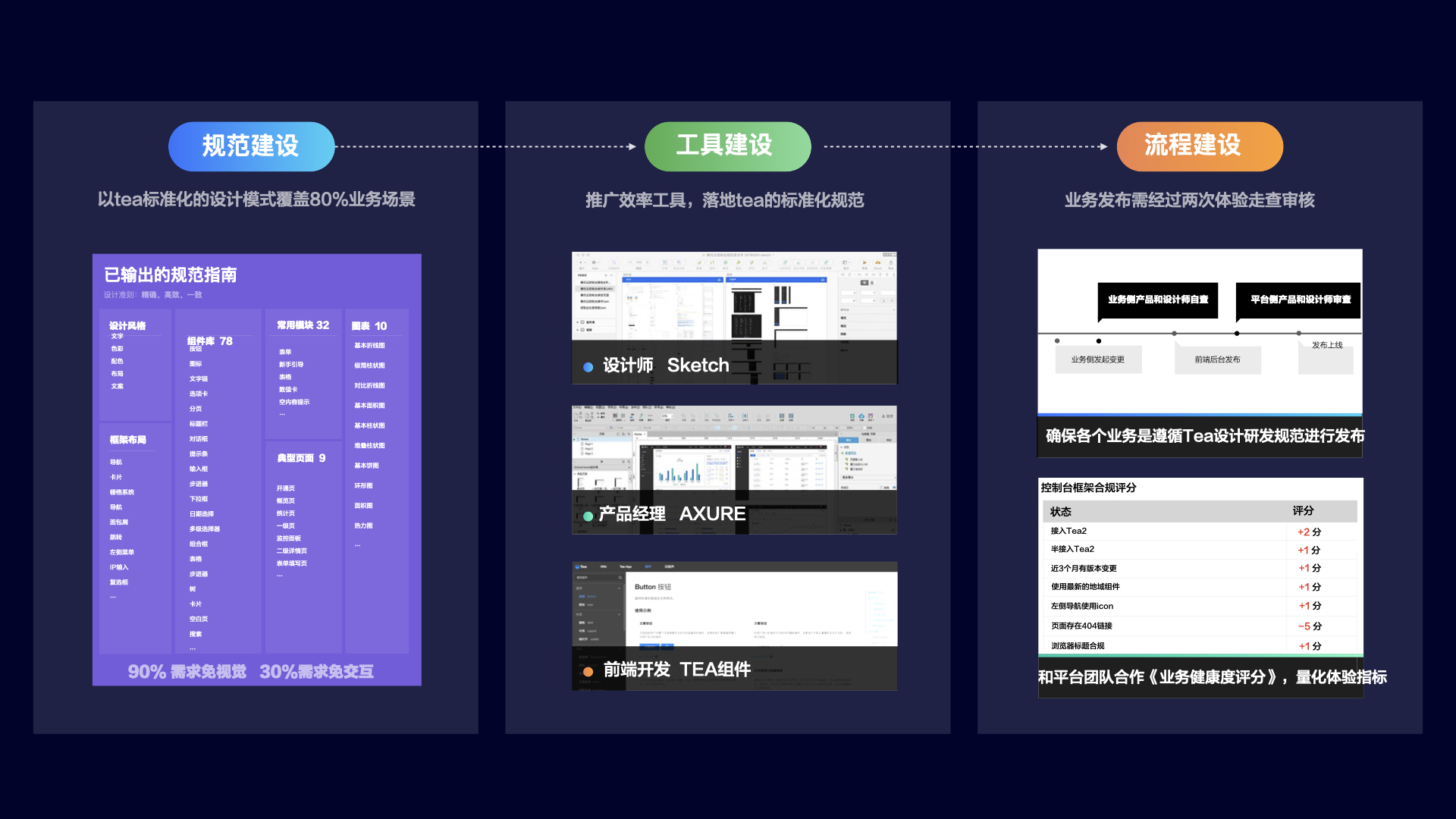 Construction of norms, tools and processes
Construction of norms, tools and processes




